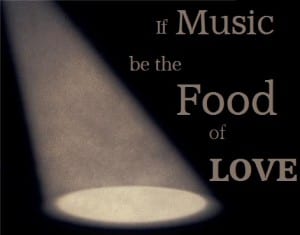Here is presentation on Rachel Rosenthal. Further notes are below.
Slide 2
Rachel Rosenthal was born in Paris with Russian parents; however Rosenthal’s family escaped France, moving to Rio de Janeiro, Brazil, via a short stay in Portugal. In April 1941, her family left Brazil to settle in New York, where Rosenthal was brought up, where her passion of performance stemmed, and where she graduated from the high school of Music and Art and became a U.S. citizen. She studied art, theatre and dance in Paris and N.Y. after the war with such teachers as Hans Hoffmann, Merce Cunningham, Erwin Piscator and Jean-Louis Barrault.
In 1955 she moved to California where she created the experimental Instant Theatre, performing in and guiding it for ten years. During that period, her focus split between the performing and visual art world however since 1975, Rosenthal has focused primarily on creating new works for the theatre, writing, performing and teaching.
Her personal life has had a massive influence on her performances.
This influence was about events as small as telling the story of a past lover, to ‘My Brazil’, a performance she wrote and performed in that was based on her travel between Paris and Brazil when she was younger. Here is a short excerpt from the performance that you can find online if you wish to watch it.
Slide 4
The desire she had to share her views with the world, Rosenthal created her own self named company in 1989.
Rosenthal’s work has been described as “a cross-culture, cross gender collective [that] enlivens the spirits and restores faith in imagination”.
Slide 6
Doing by doing originally stemmed from Rosenthal’s first theatre company in 1955 named ‘Instant theatre’ which she has now renamed to TOHUBOHU! This method focusses on the here and now- and is closely linked with her idea of total theatre and improvisational methods.
Her book is based upon this ideology and gives the reader dramatic exercises that will help to rebuild the scaffolding of what theatre lies on: to learn to act wholeheartedly and without reservation.
Slide 7
As previously mentioned, Rosenthal’s Instant theatre company of the 1960’s was renamed to TOHUBOHU in 1995.
TOHUBU is an ancient Hebrew word meaning chaos and collision, which is apt for Rosenthal’s methods as she focuses on the natural chaos of our lives and instead of trying to put order to it, allows the chaos to embody her performances. Improvisation therefore played a big part in allowing freedom and lack of restraints within her work: It’s not what you do but what you go through to achieve it.
Rosenthal speaks a lot about the idea of an ‘instant ensemble’ and this also is reflected in the set/ lighting etc.
Slide 8
As stated in that last quote, Rosenthal focussed heavily on connecting with everything in the room, and therefore within her performances she includes various theatrical elements in order to achieve her goal creating a revolutionary performance technique that integrates the elements shown.
Slide 9
Rosenthal retired from performing in 1999 (aged 73). Since she has focussed on painting, animal rights movements and lecturing at various universities across the globe.
Works Cited
Rosenthal, R. (1997) Rachel Rosenthal. Maryland: Johns Hopkins University Press.
Rosenthal, R. (2001) Rachel’s Brain and Other Storms. London and New York: Continuum.
Rosenthal, R. (2009) Mission. [online] Los Angeles. Available from: http://www.rachelrosenthal.org/rr/mission.html [Accessed 19 February 2014].
Rosenthal, R. (2010) Sacred Time, Sacred Space. [online] New York: Backstage. Available from: http://www.backstage.com/advice-for-actors/editorial/sacred-time-sacred-space/ [Accessed 19 February 2014].

